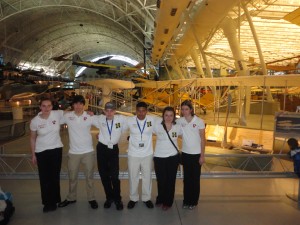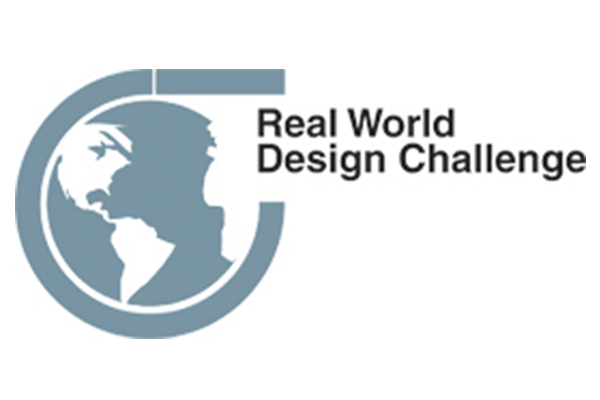 Two Iowa State students traveled to Washington D.C. in April to support the regional champions who competed in the national Real World Design Challenge (RWDC) competition.
Two Iowa State students traveled to Washington D.C. in April to support the regional champions who competed in the national Real World Design Challenge (RWDC) competition.
First year aerospace engineering students Ryan Himmelblau and Floyd “Richie” Richardson participated in the challenge as near-peer mentors to two high school teams. The teams had to create an economic and environmentally friendly prototype personal light sport aircraft. They were required to design the aircraft to carry two team members 200 miles in less than two hours at 1,000 feet above the ground.
During the regional competition, each team assembled its research into a half-hour presentation, which was judged to determine a winner. The winning team from each state earned a trip to the national competition.
Richardson and Himmelblau teamed up with students from Davenport West High School and Des Moines’ Hoover High School. According to the mentors, Davenport showed a great deal of technical expertise and Hoover’s team demonstrated strong presentation prowess. Both teams lost members leading up to the regional competition. To make up numbers, the two teams combined, and both the near-peer mentors accompanied the team to the national competition.
The College of Engineering was the first to implement a near-peer program, which paired recent high school graduates enrolled at Iowa State with the high school teams. The mentors first met with teams in September at the Science Center of Iowa in Des Moines, where participants were introduced to the software used in the challenge and mentors were assigned teams.
Near-peers stayed in contact with their teams as they prepared for the regional competition in February, answering questions about software, logistics, and other hang-ups in the design process.
Himmelblau says the steep learning curve for the software was the most difficult part of the challenge for the high school teams. The students had to learn how to use professional-grade design software, such as PTC Creo and Mathcad, which was donated by several industry sponsors.
For the near-peers, the experience turned out to be both exciting and educational.
“Sometimes the team asked me questions I didn’t know the answer to, and I had to learn the software program to figure it out. Those are programs I’ll be using in my classes later, so I have an advantage,” Himmelblau said.
John Jacobson, aerospace engineering assistant professor, helped organize the near-peer mentor system with Richard Wlezien, professor and Vance and Arlene Coffman Endowed Department Chair in Aerospace Engineering. “I think the most important thing is these high school students have the opportunity to have a real-world experience, work with mentors in industry, and communicate with college students on campus,” Jacobson said.
Wlezien instituted the near-peer program with the hope that teams and mentors who are close in age and experience would communicate more effectively. Teams would gain access to collegiate know-how and, by extension, faculty knowledge, while college students would learn by helping the students solve problems.
“Any time you teach something, you really have to learn it,” Jacobson added.
Richardson‘s history of leadership began with his involvement with the FIRST LEGO League robotics team, which led him to search for opportunities like the RWDC.
“There’s a sense of fulfillment you get from helping others and watching others succeed that makes it so worth it,” Richardson said.
